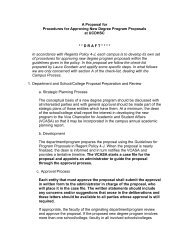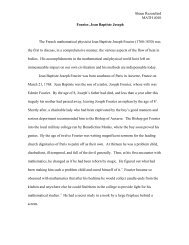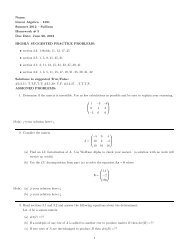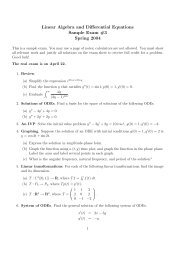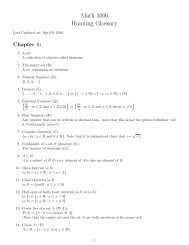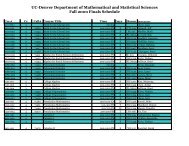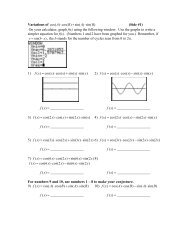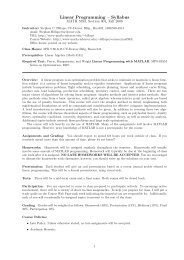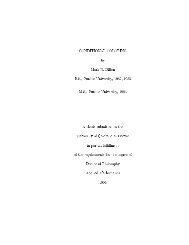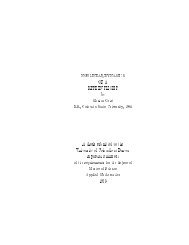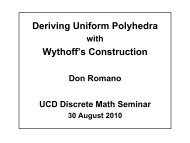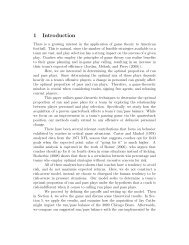University of Colorado Denver Math 1070 Topics Updated: Fall 2009 ...
University of Colorado Denver Math 1070 Topics Updated: Fall 2009 ...
University of Colorado Denver Math 1070 Topics Updated: Fall 2009 ...
You also want an ePaper? Increase the reach of your titles
YUMPU automatically turns print PDFs into web optimized ePapers that Google loves.
4. Quadratic and Polynomial Functions<br />
Graph quadratic functions using transformations.<br />
Graph a quadratic function by hand by finding its vertex, axis <strong>of</strong> symmetry and intercepts.<br />
Find the maximum or minimum value <strong>of</strong> a quadratic function by finding the vertex (without technology).<br />
Build quadratic models from verbal descriptions as well as from data with technology by quadratic regression.<br />
Solve quadratic inequalities graphically by hand and with a graphing utility.<br />
Identify polynomial functions and their degree.<br />
Identify the real zeros <strong>of</strong> a factored polynomial function and their multiplicity.<br />
Use the rational zeros theorem to list the potential rational zeros <strong>of</strong> a polynomial function.<br />
Find the rational zeros <strong>of</strong> a polynomial function by long division or synthetic division.<br />
Find the complex zeros <strong>of</strong> a polynomial function.<br />
5. Rational Functions<br />
Determine end behavior, intercepts, turning points, domain/range and sketch the graph <strong>of</strong> a factored polynomial.<br />
Find the domain <strong>of</strong> a rational function.<br />
Find the vertical and horizontal asymptotes <strong>of</strong> a rational function.<br />
Find oblique asymptotes (optional).<br />
Analyze the graph <strong>of</strong> a rational function: find the domain, intercepts, asymptotes and graph by hand.<br />
Solve applied problems (business applications) involving rational functions.<br />
6. Exponential and Logarithmic Functions<br />
Evaluate and graph exponential functions.<br />
Convert from exponential to logarithmic form and vice versa.<br />
Evaluate simple logarithmic expressions without a calculator.<br />
Determine the domain <strong>of</strong> a logarithmic function.<br />
Work with properties <strong>of</strong> logarithms.<br />
Use the change <strong>of</strong> base formula to evaluate logarithms.<br />
Solve logarithmic equations algebraically and graphically.<br />
Solve exponential equations algebraically and graphically.<br />
Solve applications involving exponential growth and decay including compound interest problems.<br />
7. Sequences and Series<br />
Find specific and general terms in a sequence.<br />
Use factorial notation.<br />
Use summation notation to write partial sums <strong>of</strong> a series.<br />
Recognize and arithmetic sequence and find the sum <strong>of</strong> the first n terms. (optional)<br />
Recognize a geometric sequence and find the sum <strong>of</strong> a finite geometric sequence. (optional)<br />
Find the sum <strong>of</strong> an infinite geometric sequence. (optional)



